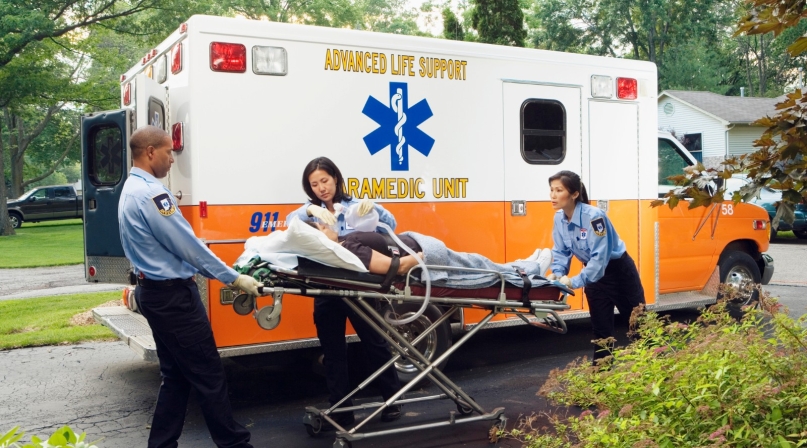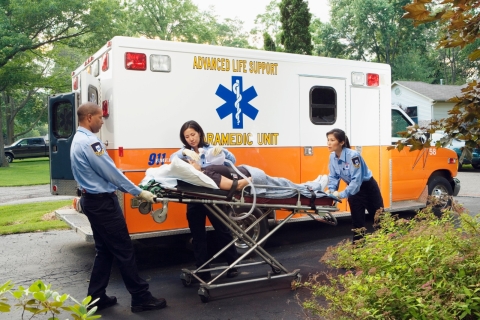Counties assist the elderly in disasters
Upcoming Events
Related News

Key Takeaways
The elderly are particularly vulnerable to disasters given the increased likelihood of having physical or mental health conditions or being socially isolated due to a lack of a support network. After Hurricanes Katrina and Sandy, the 2013 Colorado floods and other disasters, older adults accounted for more than half of all disaster-related fatalities. With 20 percent of Americans set to be 65 or older by 2050 and the increasing frequency and severity of extreme-weather events and disaster declarations, it is important for counties to assess the needs of and have plans in place to assist their elderly populations in the event of a disaster.
Learn More
According to NACo’s 2018 survey on “Emergency Management in County Government,” just over 85 percent of county respondents have plans in place to address the needs of individuals in nursing homes, and just over 70 percent have plans in place to address the needs of individuals in hospitals. Under the Disaster Recovery Reform Act of 2018, the Federal Emergency Management Agency must provide guidance and training on an annual basis to state, local and tribal governments, first responders and utility providers on the need to prioritize assistance to ensure certain facilities — like these — remain functional and/or return to functional operations as soon as practicable during power outages caused by natural hazards.
In Florida, these types of critical facilities are required to have backup generators in the event of disaster. To help ensure support to these facilities during a disaster, Palm Beach County, Fla. has created a map of the county using state data to identify the places most in need.
Many individuals chose to age-in-place, however, so it is not enough to just identify critical facilities. Counties must also assess the needs of aging residents who live on their own that need help in the event of a disaster. A 2018 study on “Improving Disaster Resilience Among Older Adults” recommended that public health departments align and extend their preparedness activities with local aging-in-place efforts and tailor part of those activities to older adults.
Additionally, counties can and often do use special needs registries and/or partner with local faith-based organizations, HOAs or other community-based groups. Working with their partners, counties can ensure elderly populations have access to senior evacuation kits and have someone set to check on them.
One program that can be used to assist this process is the Map Your Neighborhood (MYN) program. MYN trains residents to identify and create lists of their neighborhood’s homes with elderly, disabled or children, natural gas and propane tanks locations and helpful skills and equipment each neighbor has, in order to work together as a team during a disaster. This support is vital to seniors on living on their own with limited support networks, as county provided support services are often unavailable for a period of time immediately following a disaster.
When it is determined that evacuation is necessary, counties must have plans in place for residents who are unable to evacuate themselves. Some counties have created special needs shelters to address the particular needs of senior citizens and those who have medical dependencies. As space is limited and based on greatest need, it is often required that individuals register in advance.
These facilities are typically staffed by medical personnel, social workers, and administrative staff. However, they are not full-service medical facilities and, like regular shelters, require individuals to provide their own medications and supplies. Medical items are often ones left behind in the rush of an evacuation.
To address this issue, following the Tubbs, Pocket and Nuns Fires in 2017, Sonoma County, Calif. made sure that they had staff in all evacuation shelters to help older adults and those with chronic conditions get new prescriptions written and filled, which is often hard to do with many pharmacies closed or not delivering.
Post-disaster is when older adults are particularly vulnerable due to the stress of being displaced and the recovery process. The loss of support networks and their homes can be devastating, and mental health services are a top priority. In the month following the fires, calls to the Sonoma County Department of Health Services Behavioral Health department doubled. The Sonoma County Board of Supervisors developed a long-term mental health plan and partnered with local mental health providers to provide free or reduced cost services to affected residents. These are just some of the strategies that counties employ to improve the resilience of their elderly residents to disasters. For more information on this topic, visit the Centers for Disease Control and Prevention’s Emergency Preparedness for Older Adults webpage.

Attachments
Related News

House passes legislation to increase the Crime Victims Fund
On January 12, the House passed the Crime Victims Fund Stabilization Act (H.R. 909) by a voice vote.

Cross-training helps county 911 scale up for big emergencies
With training, Howard County, Md. staff help filter and respond to non-emergency requests for information and assistance during period of heavy 911 call volume.

CMS requires state Medicaid suspension upon arrest versus termination
Effective January 1, 2026, federal law now requires states to suspend, rather than terminate, Medicaid coverage when an individual is incarcerated.